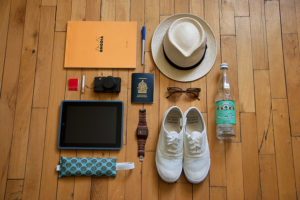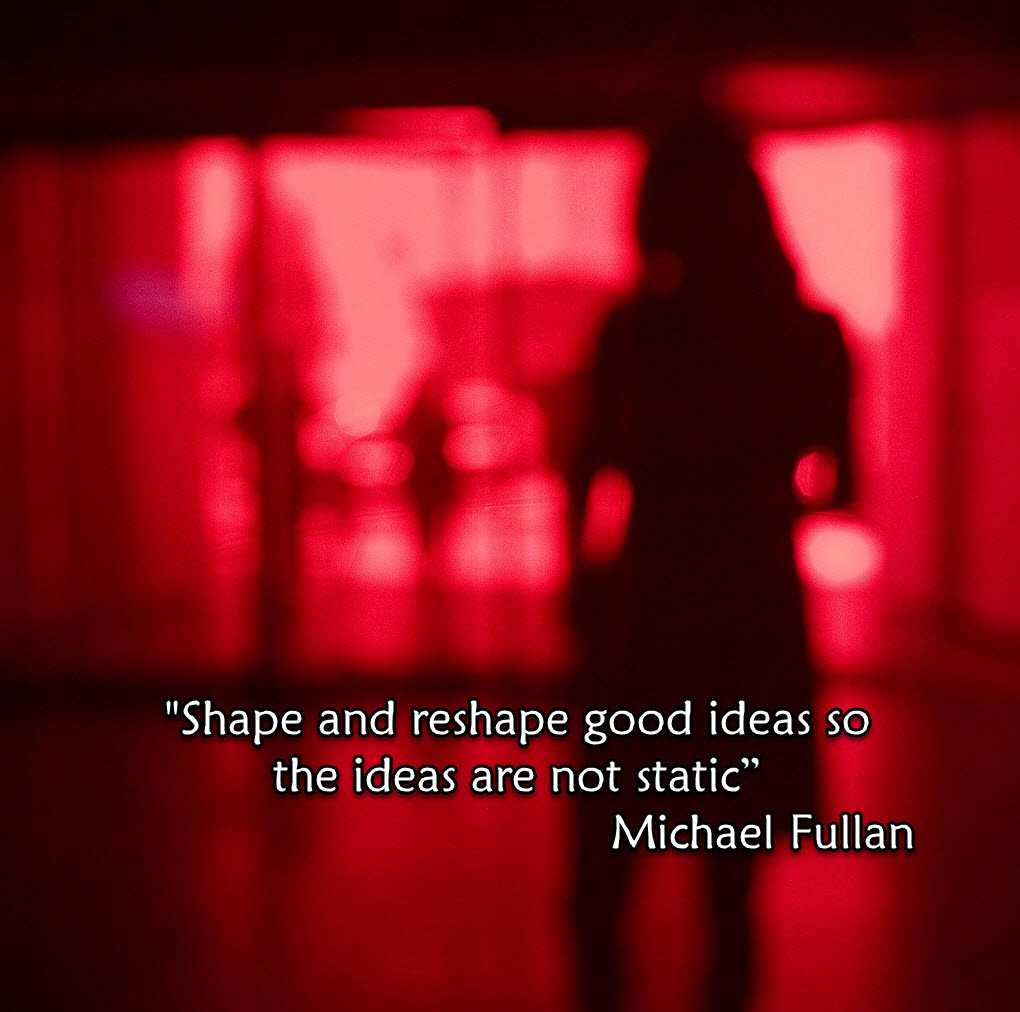
When you go on a trip, you intentionally pack certain items to take along. Doing this helps you feel comfortable and prepared to get the most out of the trip. Travel sites abound with tips of what to take, what to leave at home, and how to solve the most common dilemmas. This fall, I’ve taken a course called Educational Technology Leadership that called for me to complete a coaching cycle with another educator. This task reminded me of packing for a trip. Having been a technology TOSA for 10 years, I have so much to bring to the situation, but what do I choose to specifically take? What do I intentionally choose to leave out, and how do I approach dilemmas that arise? In other words, how do I coach so that my learning partner and his students get the most of the trip (experience)!
This term, I’ve read the text Peer Coaching: Unlocking the Power of Collaboration by Les Foltos. This text is a must read for novice and experienced coaches. Before you learn what to “take with you”, Foltos shares some foundational pieces that need to be in place for the ground to be fertile and ready for coaching. I’ve blogged about this recently, but it warrants repeating. The work of the coach must be aligned to district goals. There needs to be academic purpose! The coach and his or her supervisor need to take time to align this vision and work. Second, the role of the coach needs to be clearly established and communicated throughout the district. Principals, teachers, and all staff members need to know what the coach’s responsibilities include. They need to know that the technology coach is not the person who fixes printers or uploads names and student identification numbers to the LMS. This needs to be clearly delineated. If the technology coach is tasked with such duties, even for a small percentage of time, the vision is blurry to others.
Once a firm foundation is in place, what the coach “brings” is very important. The coach must guide with quality listening and collaboration skills. Being a good listener includes active listening, effective paraphrasing, and strong probing questions. These interpersonal skills are key if trust is to develop between the coach and learning partner. As the coach works with teachers, learning standards must be the foundation of the work. The coach and learning partner need to take time when necessary to launch a browser and look at the standards together. I have noticed that multiple standards can often be packaged together to increase the engagement, rigor, and depth of the lesson. A resources I started using this fall, is the Lesson Activity Checklist (Foltos, p. 111). As you look at a lesson through the eyes of a coach, ask yourself if the task is engaging, relevant, problem-based and enhanced by technology. Pose probing questions to a teacher to help shift the lesson to this rigor. Doing this demonstrates ISTE Coaching Standard 2f, “Coach teachers in and model incorporation of research-based best practices in instructional design when planning technology-enhanced learning experiences.”
Unlike a trip that eventually ends, powerful coaching needs to continue. Les Foltos quotes Barber and Mourshed (2007) to provide the why of coaching, “If you want good teachers, you need to have good teachers train them, and this requires focused one-on-one coaching in the classroom. In these highly successful school systems, coaches go into the classroom to provide feedback, model better instruction, and help teachers reflect on their practice” (p. 32). How does a technology coach, continue improving his or her craft? How does he or she keep abreast of new strategies and techniques?

This week, I looked at what is essential to supporting and sustaining success as a coach. In particular, I looked at what virtual and in-person Professional Learning Network (PLNS) for technology coaches are available. I came to a conclusion, from personal experience, that you need balance in your PLN involvement. I don’t mean a balance of virtual and in-person, but an equivalence in technical networking and coaching networking. I recently watched a video of John Hattie speaking (TEDx, 2013) and it reinforced this feeling. Hattie suggests schools spend their time and effort and strategies that have a high effect size. The effect-size is .3 or less for technology integration in schools (Hattie, 2013, 7:35). It has been this way for the past 40-50 years. That is a weak impact. It has not changed. Getting better at educational technology will not have a huge impact on learning. I attend an in-personal regional PLN of Tech Teachers on Special Assignment (TOSAS) monthly. It’s a great meeting and it provides me an avenue for collaboration with like-job description educators. It addresses emerging trends, instills inspiration, and provides a sounding board for dilemmas and successes in tech integration. However, it doesn’t frequently address coaching at a deep level. Where do I nourish that wheelhouse?

From my recent research, I would recommend pairing up with other coaches and role-playing the coaching cycle. Virtually, join or follow the Twitter chat hashtags, #edtechcoach and #etcoaches. While not tech specific, follow #tosachat as well. Coaching is really about quality instruction; there isn’t a need to constrain yourself to technology groups. Another opportunity is to join an online group sponsored by ISTE, such as the Ed Tech Coaches network. Look for groups on other social media sites as well, such as LinkedIn. Recently, I watched a video of Michael Fullan speaking about the change process. He shared that you must “shape and reshape good ideas so the ideas are not static” (Fullan, 2016, 23:30). He made me realize that it’s not about the new ideas, but about building capacity. I have been a coach for a decade. I have received years of professional development around coaching. Constant fine-tuning and adjusting is as important in year 10 as it is in year one for improving your coaching craft. This is so important in meeting ISTE Coaching Standard 6b, Engage in continuous learning to deepen professional knowledge, skills, and dispositions in organizational change and leadership, project management, and adult learning to improve professional practice.”
I believe that this course has prepared me to get the most out of my role as a coach. It has caused me to understand coaching in a school district must be built on a solid foundation and vision. As Foltos advocates, “The school needs formal leaders that are committed to defining and implementing a culture of collaboration focused on continuous improvement of teaching and learning” (p. 180). Coaches need to be provided professional development of their own (such as a class like this) to understand their role and responsibilities, and have opportunity to practice and receive feedback. Further, they need to be encouraged to continue this PD throughout their time as a coach. One method is through active collaboration with others, who understand effective coaching. This is part of ISTE Coaching Standard 6c, Content Knowledge and Professional Growth, “Regularly evaluate and reflect on their professional practice and dispositions to improve and strengthen their ability to effectively model and facilitate technology-enhanced learning experiences.”
In closing, I ask you to consider, how do you balance learning more about emerging technology with developing your coaching skills? Are you intentionally doing this? Who do you collaborate with professionally? What do you talk about the most?
Works cited:
Barber, M., & Mourshed, M. (2007). How the world’s best-performing school systems come out on top. London: McKinsey and Company.
Bélanger, C. (2014). My middle eastern vital kit. Retrieved from https://flic.kr/p/nMqRDw
Foltos, L. (2013). Peer coaching: unlocking the power of collaboration. Thousand Oaks, CA: Corwin.
Hawk. T. (2008). Important works. Retrieved from https://flic.kr/p/4V9Yaq
International Society for Technology in Education. (2011). ISTE standards for coaches. Retrieved from http://www.iste.org/standards/ISTE-standards/standards-for-coaches
Newton. B. (2008). Balance. Retrieved from https://flic.kr/p/53BpMd
Roots of Emathy. (2016, July 12). Michael fullan – perspectives on learning [Video file]. Retrieved from https://www.youtube.com/watch?v=rgy4nhKgEog
TedxTalks. (2013, November 22). Why are so many of our teachers and schools so successful? John Hattie at TEDxNorrkoping [Video file]. Retrieved from https://www.youtube.com/watch?v=rzwJXUieD0U&feature=youtu.be


